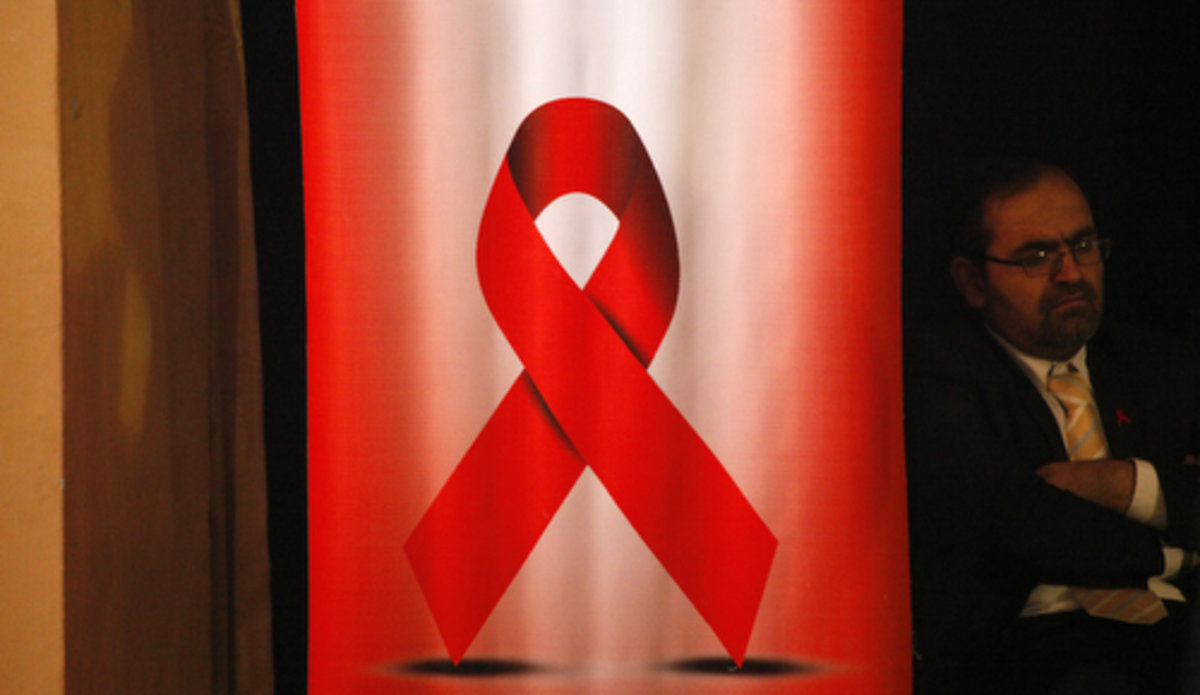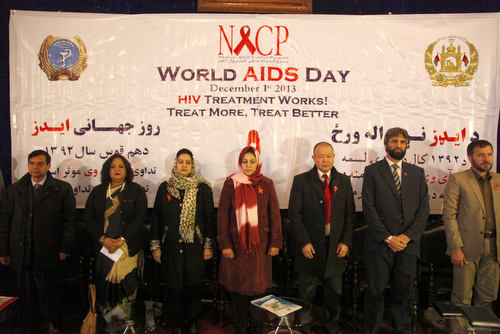On World AIDS Day, UN and Afghan officials highlight need to control HIV infection
KABUL - United Nations agencies today joined Afghan health authorities at a ceremony in the capital, Kabul, to highlight the issue of HIV/AIDS and measures to control its infection rate in Afghanistan, where open discussion on HIV infection is still considered a taboo.
Addressing the ceremony – organized to mark World AIDS Day – the country’s Deputy Minister for Health Services, Najia Tariq, cited prolonged conflict, drug production and addiction, poverty, illiteracy and migration as being among the factors contributing to HIV infection.
UN agencies and the Afghan Ministry of Public Health estimate that some 5,000 Afghans live with HIV, of which only 1,529 cases are registered. This year, Ms. Tariq said, Afghanistan registered 162 new cases of HIV, up 38 per cent from last year’s 117 cases.
She said that the reason for the increased registration of HIV infection cases could be an improved system of surveillance and fact-finding, increased levels of awareness among members of the public and HIV treatment being more accessible.
The human immunodeficiency virus – better known as HIV – is a retrovirus that infects cells of the immune system, destroying or impairing their function. As the infection progresses, the immune system becomes weaker, and the person becomes more susceptible to infections. The most advanced stage of HIV infection is acquired immunodeficiency syndrome, better known as AIDS.
World AIDS Day is observed on 1 December each year, following official recognition of the Day by the UN General Assembly in 1988. The Day is observed to honour AIDS victims, in addition to focusing on issues surrounding HIV and AIDS. In Afghanistan, the theme for this year’s observance is ‘HIV treatment works – treat more and treat better.’
According to the UN World Health Organization (WHO), there were 35.3 million people living with HIV around the world in 2012, including some 2.1 million adolescents. The overall figure is represents an increase of 1.3 million new infected persons compared to 2011. By the end of 2012, 9.7 million in low- and middle-income countries received anti-retroviral therapy.
In his message for the Day, UN Secretary-General Ban Ki-moon called for “continued investment, commitment and innovation” to reach the vision of zero new HIV infections, zero discrimination and zero AIDS-related deaths.
Expressing optimism on the progress made so far, the UN chief said the world was accelerating progress in responding to HIV.
“There are significant decreases in new infections and deaths, and we are making significant progress in realizing our target of ensuring 15 million people have access to antiretroviral treatment by 2015,” said Mr. Ban, adding that this was crucial to halting and reversing the AIDS epidemic for good.
In his comments at the Kabul event, the WHO representative in the country, Dr. Sayed Karam Shah, called for a regional approach to combat the spread of HIV, with the aim of achieving universal coverage of HIV treatment by 2020.
He added that most people living with HIV in the region are not aware of their infection, and most people at high risk of infection do not have access to prevention services.
“The good news is that people living with HIV on treatment can live long and productive lives,” Dr. Shah said. “Moreover, they are less likely to transmit the virus to others.”
The Afghan Government has established HIV treatment centres in 11 of the country’s provinces: Kabul, Herat, Balkh, Kandahar, Nangarhar, Kunduz, Ghazni, Badakhshan, Parwan, Kunar and Dai Kundi.
 UN
UN








